This article was medically reviewed by Erik Kramer, DO, MPH. Dr. Erik Kramer is a Board-Certified Primary Care Physician at the University of Colorado. With over 15 years of experience, his clinical interests include obesity and weight management, diabetes care, and preventive care, as well as embracing a holistic approach to primary care. He received his Doctorate in Osteopathic Medicine (D.O.) from the Touro University Nevada College of Osteopathic Medicine and completed his residency at Central Maine Medical Center. Dr. Kramer is a Diplomate of the American Board of Obesity Medicine.
There are 14 references cited in this article, which can be found at the bottom of the page.
wikiHow marks an article as reader-approved once it receives enough positive feedback. In this case, several readers have written to tell us that this article was helpful to them, earning it our reader-approved status.
This article has been viewed 148,598 times.
HDL, or high-density lipoprotein, has long been thought to correlate to heart-health. HDL, often called the "good" cholesterol, functions as a shuttle that takes cholesterol from the bloodstream (where it can form a blockage and lead to heart disease, also known as atherosclerosis) and transports it to the liver.[1] You might think that having a higher HDL level would reduce the risk of cardiovascular disease, but there are many more factors involved in the formation of atherosclerosis. While HDL performs an important function in removing cholesterol from your system, simply raising your HDL cholesterol may not decrease your risk of cardiovascular disease.[2] If you’re trying to decrease your cardiac risk, focus on making positive lifestyle changes and follow your doctor’s recommendations.
Steps
Increasing HDL with Positive Lifestyle Choices
-
1Exercise for 30 minutes on most days of the week. Within 2 months, daily aerobic exercise can raise HDL levels by about 5% in otherwise healthy adults. Start by exercising briskly for 30 minutes at least five times per week, either by walking, running, cycling, or swimming. Make sure to continue your exercise program for a long period of time and involve mixed activities, such as aerobic and resistance training.[3]
- The recommended weekly total for exercise is 150 minutes, which you can get in a variety of ways. For example, you could walk for 30 minutes on 5 days of the week, or attend a 50 minute exercise class on 3 days of the week.
-
2Lose weight if you're overweight or obese. Talk with your doctor to determine if you might benefit from losing weight. Reduce your daily calorie consumption to create a caloric deficit. If you’re overweight or obese, losing weight may improve your HDL levels. For every 6 lb (2.7 kg) you lose, your HDL levels may increase by 1 mg/dL.[4]
- If your BMI (body mass index) is higher than 30, losing weight may help to improve other aspects of your health as well, such as your blood pressure and energy levels.
- Contrary to popular belief, HDL is not a type of cholesterol; rather, it's a type of cholesterol carrier or shuttle. HDL is called "good" because it supposedly reduces the build-up of cholesterol in arteries, a condition called atherosclerosis.[5]
Advertisement -
3Quit smoking if you’re a smoker. Talk with your doctor about safe options for quitting, such as nicotine patches or gum to help wean yourself off cigarettes. In addition to being correlated to a variety of diseases, including lung cancer, smoking cigarettes also has an unhealthy impact on cholesterol and LDL/HDL ratios. Smoking may lower HDL levels (by an average of 5 points) and increase total blood cholesterol.[6] Even secondhand smoke lowers HDL. The toxic compounds in cigarette smoke damage the insides of blood vessels and trigger the deposition of cholesterol in efforts to repair the damage. The net effect is plaque formation and a cholesterol ratio that favors LDL. Quitting smoking has a direct effect on raising HDL levels — in some cases, by as much as 10%.[7]
- Smoking damages virtually every organ of the body and causes all sorts of cardiovascular-related problems, which contribute significantly to premature death.
- Smoking is estimated to increase the risk of coronary heart disease and stroke by up to four times compared to non-smokers.[8]
-
4Drink alcohol in moderation if you drink. At moderate levels (no more than 1 alcoholic beverage daily) some forms of alcohol have been linked to raising HDL levels. More specifically, red wine consumption is believed to be beneficial to cardiovascular health due to its high antioxidant content, which helps prevent blood vessel damage. Consequently, less cholesterol is needed as "band-aids" to repair arterial damage, which increases the liver's production of HDL in order to shuttle the cholesterol out of the bloodstream.[9]
- One drink is defined as 12 fl oz (350 mL) of beer, 5 fl oz (150 mL) of wine, or 1.5 fl oz (44 mL) of spirits.
- If you currently don't drink alcoholic beverages, don't start in efforts of raising your HDL levels. There are many more healthy methods.
- The antioxidants in red wine have no relationship to the alcohol, so drinking fresh grape juice or eating the grapes raw is likely to provide at least as much cardiovascular benefit, if not more.
-
5Eat unsaturated fats in moderation and avoid saturated fats. Choose more monounsaturated and polyunsaturated fats, as well omega-3 fats that are found in fish, olive oil, avocados, nuts, and flaxseed. Avoid trans fats, because they are most damaging to blood vessels and can have the most negative impact on HDL levels. A healthy diet always includes some fat — between 25–35% of your daily calories should come from fatty acids. Cut your intake of saturated fat to no more than 7% of your daily calories.[10] Keep in mind that eating cholesterol-rich food doesn't have a big impact on blood cholesterol levels because the liver plays an important regulatory role.
- Good sources of monounsaturated foods include olive, peanut, sesame and canola oils, most nuts, and avocados.
- Good sources of polyunsaturated fats include soybean and sunflower oils, walnuts, tofu, and fatty fish such as salmon and mackerel.
- Trans fats (hydrogenated fats) are found in many processed foods including cookies, crackers, fried foods, and margarine.
-
6Include more dark-colored fruits and veggies in your diet. All fresh produce has health benefits, but those colored dark red and purple may both raise HDL and lower LDL levels. As noted above, grapes and other dark fruits are rich in antioxidants, particularly colorful compounds called anthocyanins. Research shows that consuming anthocyanins (in fruit or as supplements) can increase HDL levels by almost 14% while decreasing LDL levels.[11] Excellent sources of anthocyanins include plums, purple and red grapes, raspberries, blackberries, purple cabbage, and eggplant.
- Eating more fruits and veggies also increases your fiber intake, which has been shown to help control total blood cholesterol levels.
Working with Your Doctor
-
1Get your cholesterol checked as recommended by your doctor. The ideal level for HDL cholesterol in men and women is 60 mg/dL (1.6 mmol/L) or higher. If your HDL was not in this range the last time you had it checked, your doctor may recommend checking it again at specific intervals to look for improvement. Go for your bloodwork on the schedule recommended by your doctor to see if your HDL level is increasing.[12]
- Keep in mind that your HDL level will only increase if you are making lifestyle changes to improve it. Be consistent with your healthy habits for the best results.
-
2Talk to your doctor about prescription medications to raise HDL. Statin drugs are effective at lowering total blood cholesterol levels, and they may provide a 5 to 10% increase in your HDL levels. Prescription niacin and fibrate medications are also sometimes prescribed to help increase HDL cholesterol. Talk with your doctor about the medication options that may be helpful for you.[13]
- Keep in mind even though certain medications may raise your HDL, this will not improve your cardiovascular health. It’s still important to make lifestyle changes to do this.[14]
-
3Ask your doctor about taking fish oil supplements. You can get fish oil supplements over-the-counter, but it’s important to discuss taking them with your doctor first, especially if you are already taking other medications. Taken daily, fish oil supplements may help to increase your HDL levels over time.[15]
- Follow the manufacturer’s dosing instructions or ask your doctor for a dose recommendation.
-
4Avoid testosterone and other anabolic steroids. These types of drugs can lower your HDL levels, so it’s important to avoid taking them. If you are taking them, talk with your doctor about how this may be affecting your cholesterol levels and consider alternatives or other medications to offset the effects.[16]
- Low-density lipoprotein or LDL is often called "bad" cholesterol, but really it's just a transporter that shuttles cholesterol away from the liver towards cells, including the damaged membranes of arteries. The problem occurs when the cholesterol in arterial walls builds up too much, because it attracts macrophages and triggers the formation of plaques — the hallmark sign of atherosclerosis or clogged arteries.[17]
Warnings
- Consult with your doctor before starting any serious exercise regimen.⧼thumbs_response⧽
References
- ↑ http://www.nejm.org/doi/full/10.1056/NEJMoa1409065#t=articleResults
- ↑ https://www.aacc.org/publications/cln/cln-stat/2014/december/new-measure-of-hdl-cholesterol-function
- ↑ http://www.everydayhealth.com/high-cholesterol-pictures/how-to-raise-hdl-cholesterol.aspx#02
- ↑ http://www.mayoclinic.org/diseases-conditions/high-blood-cholesterol/in-depth/hdl-cholesterol/art-20046388?pg=2
- ↑ http://www.nejm.org/doi/full/10.1056/NEJMoa1409065#t=abstract
- ↑ http://www.berkeleywellness.com/self-care/preventive-care/slideshow/how-raise-hdl-cholesterol
- ↑ http://www.mayoclinic.org/diseases-conditions/high-blood-cholesterol/in-depth/hdl-cholesterol/art-20046388?pg=2
- ↑ http://www.cdc.gov/tobacco/data_statistics/fact_sheets/health_effects/effects_cig_smoking/
- ↑ http://www.mayoclinic.org/diseases-conditions/high-blood-cholesterol/in-depth/hdl-cholesterol/art-20046388?pg=2
- ↑ http://www.mayoclinic.org/diseases-conditions/high-blood-cholesterol/in-depth/hdl-cholesterol/art-20046388?pg=2
- ↑ http://www.everydayhealth.com/high-cholesterol-pictures/how-to-raise-hdl-cholesterol.aspx#05
- ↑ https://www.mayoclinic.org/diseases-conditions/high-blood-cholesterol/in-depth/hdl-cholesterol/art-20046388
- ↑ http://www.berkeleywellness.com/self-care/preventive-care/slideshow/how-raise-hdl-cholesterol
- ↑ http://www.nejm.org/doi/full/10.1056/NEJMoa1409065#t=article
- ↑ https://www.health.harvard.edu/heart-health/should-you-increase-hdl-and-how
- ↑ https://www.mayoclinic.org/diseases-conditions/high-blood-cholesterol/in-depth/hdl-cholesterol/art-20046388
- ↑ http://www.mayoclinic.org/diseases-conditions/high-blood-cholesterol/in-depth/hdl-cholesterol/art-20046388?pg=1
- ↑ http://www.everydayhealth.com/high-cholesterol-pictures/how-to-raise-hdl-cholesterol.aspx#04
- ↑ http://www.everydayhealth.com/high-cholesterol-pictures/how-to-raise-hdl-cholesterol.aspx#07
About This Article
To raise HDL, or high-density lipoprotein, cholesterol levels, try to choose foods with healthier fats, like olive oil, avocados, tofu, and salmon, instead of the saturated and hydrogenated fats found in processed foods. You can also eat more dark-colored fruits and vegetables, such as plums, grapes, raspberries, purple cabbage, and eggplant, since they’re rich in antioxidants and help to raise HDL levels. If you’re overweight, try to exercise for 30 minutes 5 times a week to lower your body mass index and significantly improve your HDL levels. Additionally, if you smoke, try to get help quitting, since this can also greatly improve your HDL levels. For more tips from our Medical co-author, including how to understand the role HDL levels play in your health, read on!

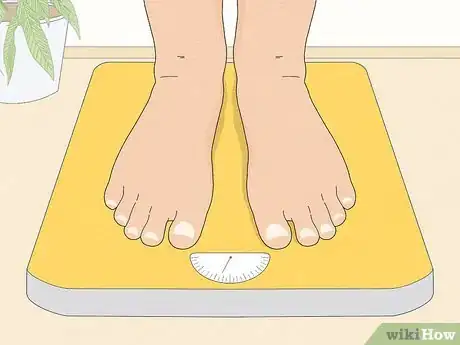


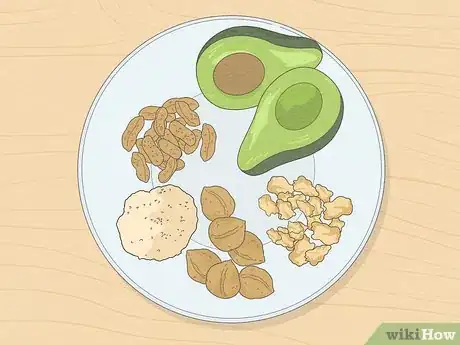

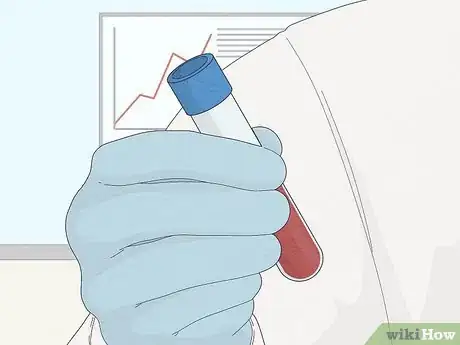
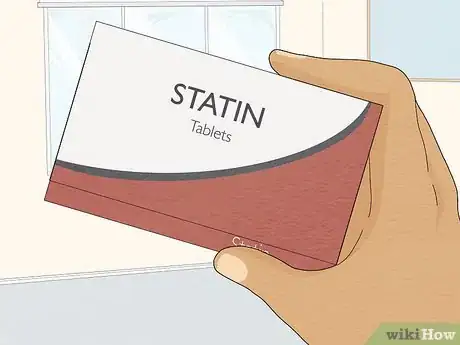


























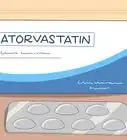






































Medical Disclaimer
The content of this article is not intended to be a substitute for professional medical advice, examination, diagnosis, or treatment. You should always contact your doctor or other qualified healthcare professional before starting, changing, or stopping any kind of health treatment.
Read More...